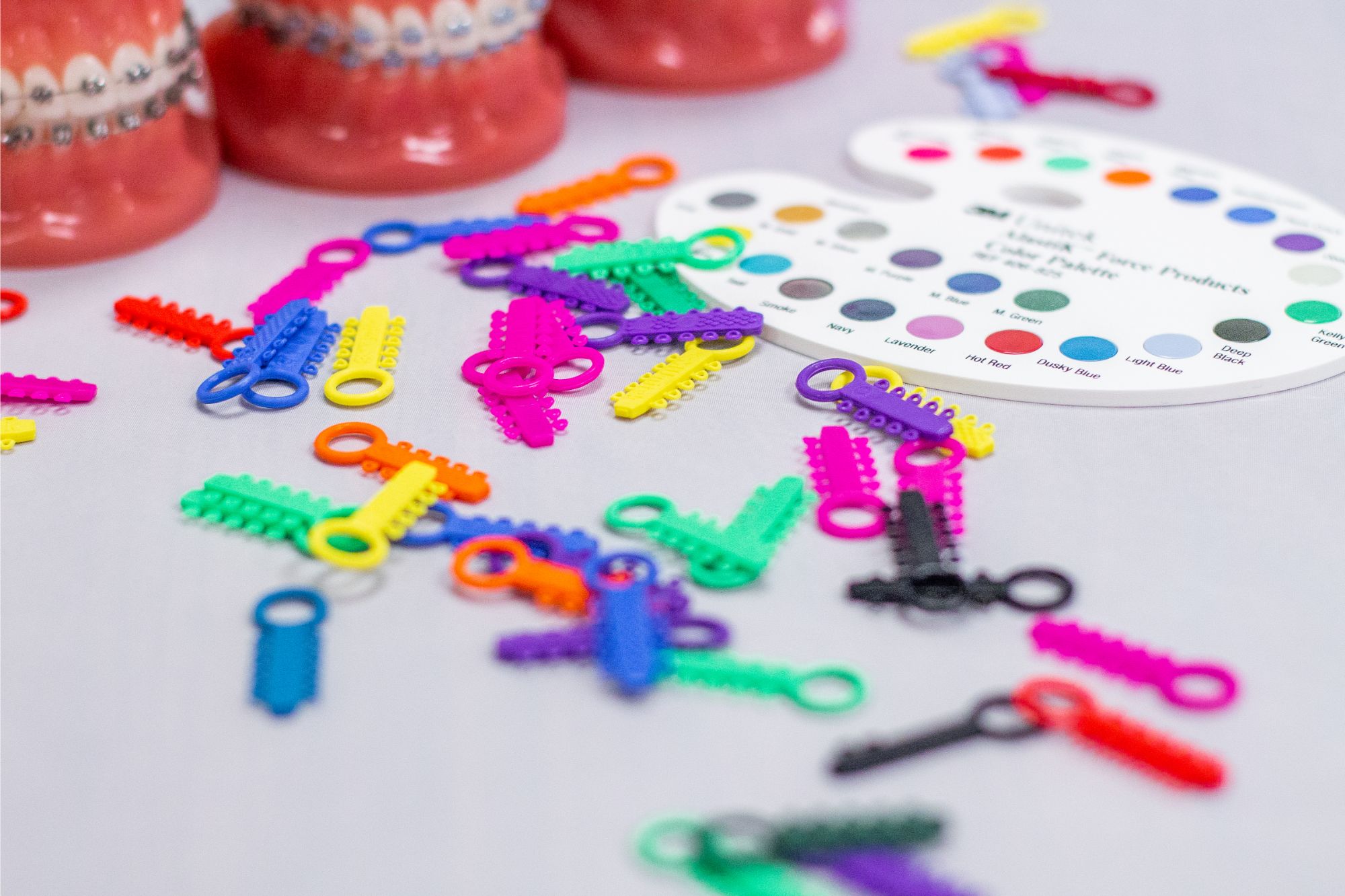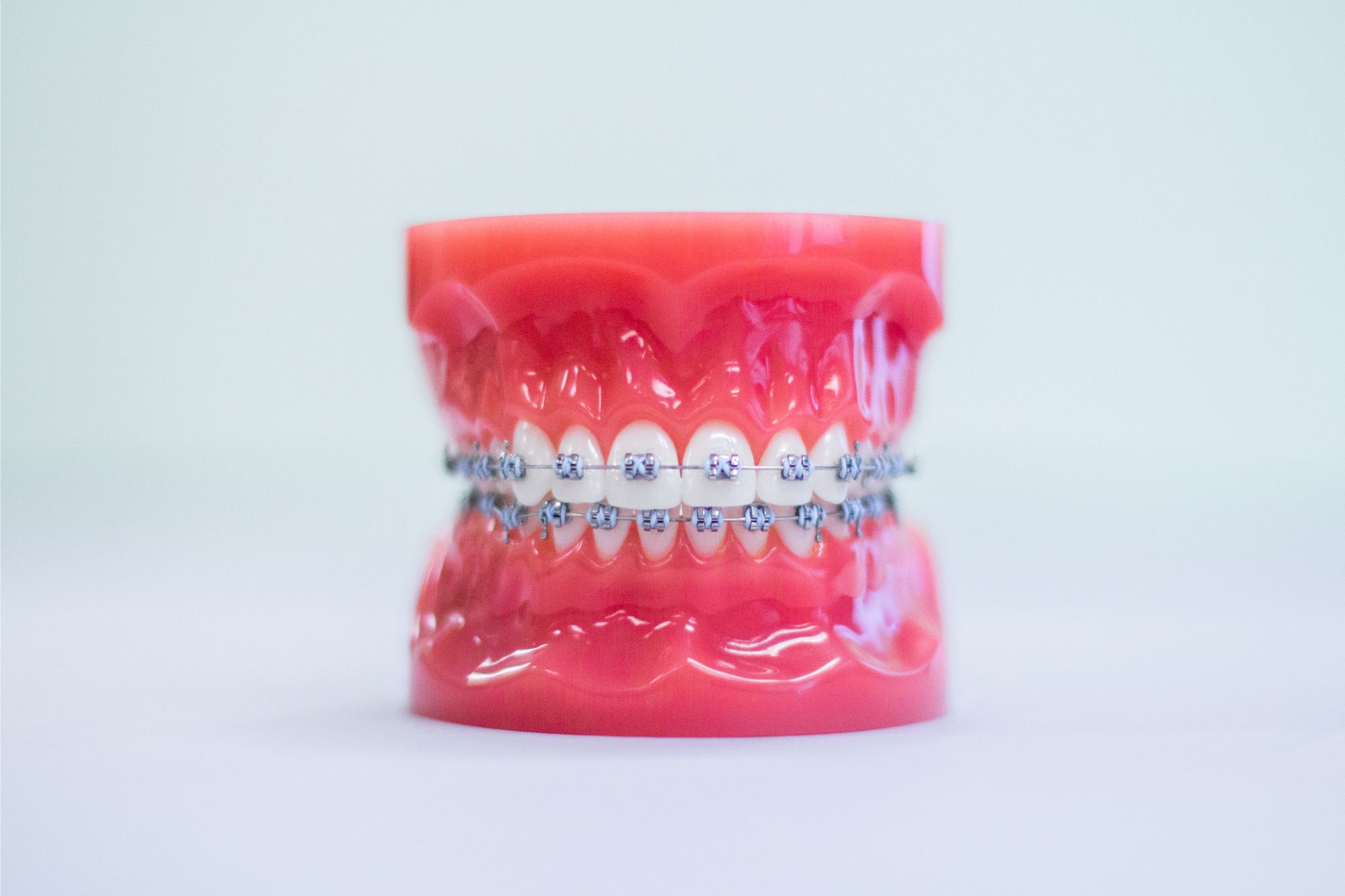Metal Braces
Not your mothers braces!
High-tech braces designed for you
When it comes to orthodontic treatment, traditional braces are likely the most well-known option. With a long history of successful treatment, traditional braces are known for their ability to correct a wide range of oral issues. Recently, newer technology and better components have made braces better than ever before. These new brackets are as reliable and effective treatment as the older version, but are smaller, less painful and more effective at moving teeth.
Ever wondered what braces are made of?
Let’s take a closer look. The brackets, which are durable and strong, are made from a mixture of metals like stainless steel and nickel. They have small hooks or doors where a wire is threaded through. The brackets can be secured by closing the door or placing an elastic over the top of the wire. To attach the brackets to your teeth, Dr. Nielson or Dr. Bingham will use a strong dental glue.
The thin metal wire runs from one bracket to another and is responsible for moving your teeth in the right direction. Dr. Nielson or Dr. Bingham will change the curvature and shape of the wire throughout your treatment. In some cases, the wire will attach all of your upper or lower teeth together, but we may cut the wire to connect just a few teeth if necessary.
Elastics are used for bite correction and are strung between upper and lower bracket hooks. They can pull the upper jaw backward to correct an overbite or the lower jaw back to correct an underbite.
Orthodontic bands are stainless steel rings cemented to your teeth using dental bonding agents. They can provide an anchor for your braces and orthodontic appliances, but they’re not used for everyone.
Spacers, also known as separators, are small elastic “donuts” or rings that create space between your teeth when necessary.
Finally, elastic ties, o-rings, ligatures, or colors are tiny rubber bands used to attach the archwire to the brackets. They come in dozens of colors and are less rigid than spacers.



Metal Braces FAQ’s
How Do Braces Work?
Before applying the brackets, Dr. Nielson, Dr. Bingham and our team will collect photos and X-rays of your mouth. Sometimes we’ll use our scanner to scan each of your teeth, gums and mouth. If necessary, this process takes 10-15 minutes and provides an extremely accurate 3D view of your mouth. After the X-Ray and optional scan, the information will be used to help create your customized treatment plan. This will include how each tooth needs to be moved to get it in the best possible position. We will decide how to place the brackets based on this information. For example, if you have some teeth that need to be tilted, the placement of those brackets will be different than the placement of brackets for teeth that need to be turned. Once the brackets have been attached, we will insert the wire. Bends in the wire will provide different types of pressure on different teeth. A bend in the wire is how most orthodontists cause specific and precise movements. For example, a bend can help a tooth that is twisted to turn and face the right way, or aligning one tooth that is too far forward with one that is too far back. This process of tooth movement is called remodeling, and it involves minor changes in the bone that surrounds the roots of your teeth.
What can I expect from today’s metal braces?
Modern metal braces are smaller, more comfortable, and less conspicuous than their predecessors. They are sleeker with lighter wires and brackets, which reduces irritation in your mouth. You can also customize them with colored elastics that showcase your personality or match your favorite sports team, school colors, or just your favorite color combination. Metal braces are excellent at fixing complex tooth issues and can work faster than other treatments to close gaps and align teeth, potentially shortening treatment time.
How long will I be in braces?
The length of treatment with metal braces depends on individual circumstances, and every mouth is different. Treatment time can be as short as six months or as long as three years for complex issues, with an average of 18 to 22 months. You can expect to see signs of improvement in your teeth in a short time, which will boost your confidence during the treatment process.
REQUEST YOUR FREE CONSULT

